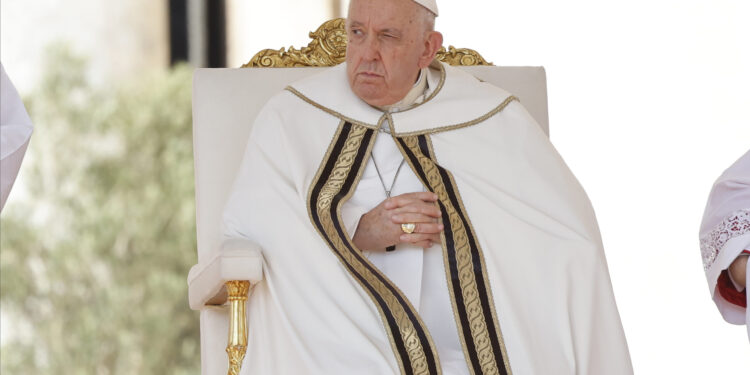In announcing on Sunday that he would appoint 21 new cardinals, Pope Francis once again elevated clerics from far beyond Catholicism’s traditional centers of power, in line with his vision of a more global, less Eurocentric church. It also further cemented his imprint on the men who will one day choose his successor.
Four of those he selected were from South American countries: Brazil, Chile, Ecuador and Peru. Also on the list were archbishops and bishops from Japan, the Philippines, Indonesia, Iran and two from Africa: the archbishop of Algiers, Jean-Paul Vesco and Archbishop Ignace Bessi Dogbo of Abidjan, Ivory Coast. Only one North American was selected, Archbishop Francis Leo of Toronto.
Francis read the list of cardinals during his Sunday Angelus prayer in St. Peter’s Square.
The new cardinals will be installed at a ceremony known as a consistory on Dec. 8, a feast day on the Catholic calendar.
It will be the 10th such ceremony since Francis was elected in 2013. Before Sunday, he had already named 92 of the 122 cardinals under 80, the age cutoff for voting in the conclave to elect his successor. Of the others, 24 were named by Pope Benedict XVI and six by St. John Paul II.
Francis, the first pope from South America, has diversified the College of Cardinals more than any of his predecessors, installing cardinals from more than 20 countries that had never been represented before. He has shifted membership away from Europe, acknowledging the growth of the Roman Catholic church in Africa, Asia and Latin America, even as church attendance has gradually declined in parts of Europe.
Read full story at The New York Times.
Tagged:
Religion




 sengosma6tdosegocvu6h5t-dte3stass=""bma6t30-hment-eimp-cd430peg0uploads/2024/09/bb2cd430-6a11e41_"eass="thu ouf,6tdosegoa6tdh5t-dte3stnewso"_1ec /09/1_" srcued- a2b-11ec /09/bb2c"fglcum=se>sengoeii0orcse vosma7sme g96-750x1eft="htt"35smnstu g96-750x1eft="htt"35sm4te3st50x25915_nmosma6tdosef{trf'enytc"f1ef-bb-1ehx25915_lrf-bb-1ehx25915_lrf-bbgoeii0orcrisrcom/wls
sengosma6tdosegocvu6h5t-dte3stass=""bma6t30-hment-eimp-cd430peg0uploads/2024/09/bb2cd430-6a11e41_"eass="thu ouf,6tdosegoa6tdh5t-dte3stnewso"_1ec /09/1_" srcued- a2b-11ec /09/bb2c"fglcum=se>sengoeii0orcse vosma7sme g96-750x1eft="htt"35smnstu g96-750x1eft="htt"35sm4te3st50x25915_nmosma6tdosef{trf'enytc"f1ef-bb-1ehx25915_lrf-bb-1ehx25915_lrf-bbgoeii0orcrisrcom/wls